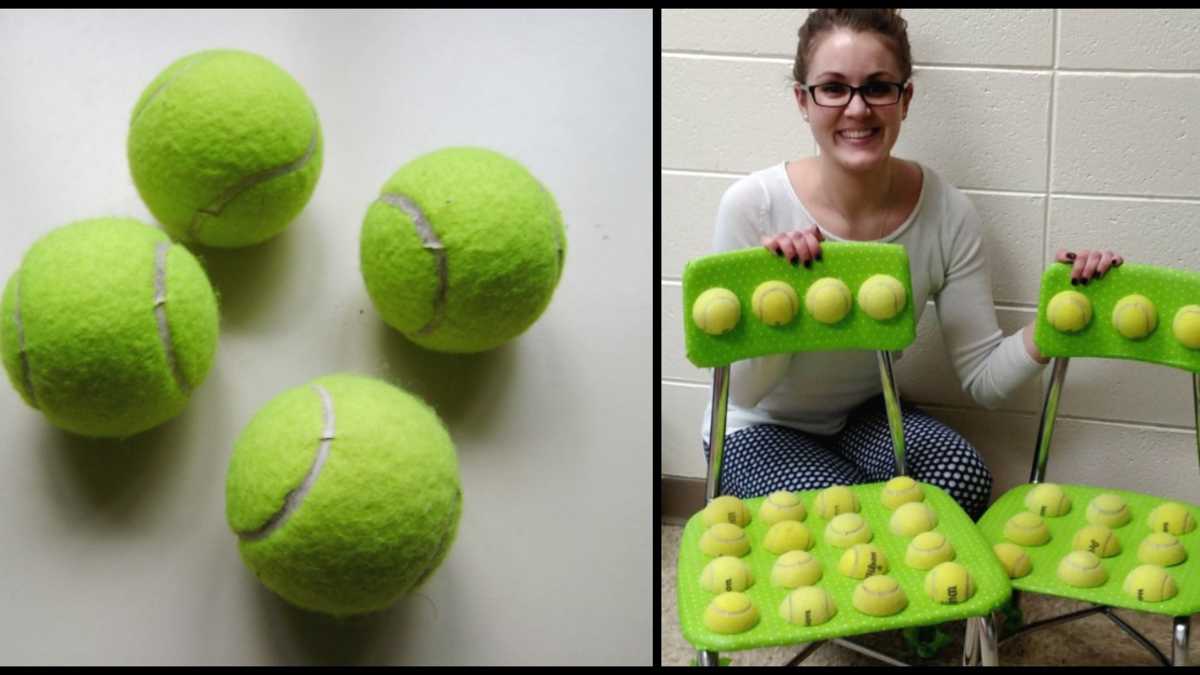Amy Maplethorpe, a speech and language teacher at Raymond Ellis Elementary School in Round Lake, Illinois, has received public praise for an unorthodox teaching solution: the tennis ball chair.
At first glance some viewers assume this weird looking chair may be a form of punishment, but their assumption couldn’t be more wrong. Designed to help meet the learnging needs of autistic students, Maplethorpe’s idea was an incredible success. Now her story has gone viral as teachers and parents around the globe discover this weird trick really works.
Her story was featured in a post on Raymond Ellis Elementary School’s Facebook page, and it has quickly gone viral for obvious reasons,
Miss Maplethorpe, from our Speech and Language Department created these chairs for our students that have sensory issues. Thank you Miss Maplethorpe.
(image source; Facebook/Raymond Ellis Elementary School)
Sensory seating is used for students who may have difficulty processing information from their senses and from the world around them. Tennis balls on the seat and backrest provide an alternative texture to improve sensory regulation. Students with autism spectrum disorder, Down syndrome, sensory processing disorder, etc. may benefit from this seating option.
Thank you for such the high interest in the tennis ball chairs. It is exciting to hear that they could benefit students across the world! The materials used to make the chairs included: a chair, ½ tennis balls, fabric, modge podge, paintbrush/paint sponge, and hot glue. First, take a chair and modge podge the seat and backrest and then place fabric over it. Next, modge podge over the fabric and wait for it to dry, which takes approximately 20-30 minutes. Then, hot glue tennis balls cut in half to the seat and backrest. When that dries, hot glue the excess fabric underneath the seat and behind the backrest to give it an “upholstered” look. It may also be helpful to hot glue around the tennis balls one more time for an extra hold. And with that, the chairs are done. Happy creating!
In an interview with the Huffington Post, Maplethorpe discussed the benefits of her invention. “First-grade students that have used the chair, they have become more patient and have followed directions,” she said. “I’m really excited that this has taken off and I’m really excited to see the benefits for students across the country, and educators and parents.”
